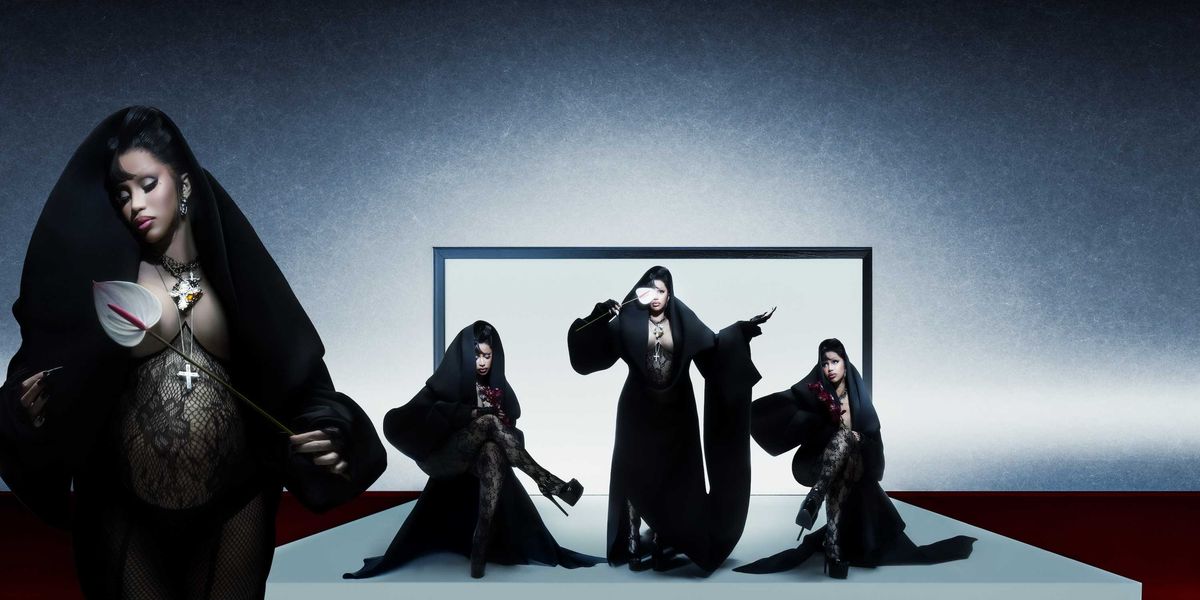
Who's Afraid of the Knockdown Center?
By Tobias Hess
Jan 08, 2025I’m at Knockdown Center among a swarm of millennial dreamers. LCD Soundsystem is playing their familiar blend of synth euphoria and warbly voiced exhaustion, and the dance floor is opening up in oscillating circles to allow for certain movers to spin. I’m tired, but I’m searching for my second wind. After a few hours of 2010s nostalgia, I’m going downstairs to BASEMENT.
This is my umpteenth time in Knockdown Center, but my first time at one of LCD Soundsystem’s annual residency shows. It’s also the first time I've reserved a whole evening to experience the building in its complete, beguiling whole. The night represents the dual ambitions (and potential contradiction) of the multipart venue. Downstairs is an exclusive club that sits at the center of NYC’s ever-cresting techno boom; and upstairs is a more glimmering, broad-spectrum venue that has hosted everyone from Eartheater to Drain Gang to Sky Ferreira. For most, the two floors exist as separate entities, but they are in fact part of the same venue, the same enterprise. Ten years into Knockdown Center and five-plus years into BASEMENT, I’m there to see what connects upstairs to downstairs other than a sturdy cement ceiling and century-old pipes.
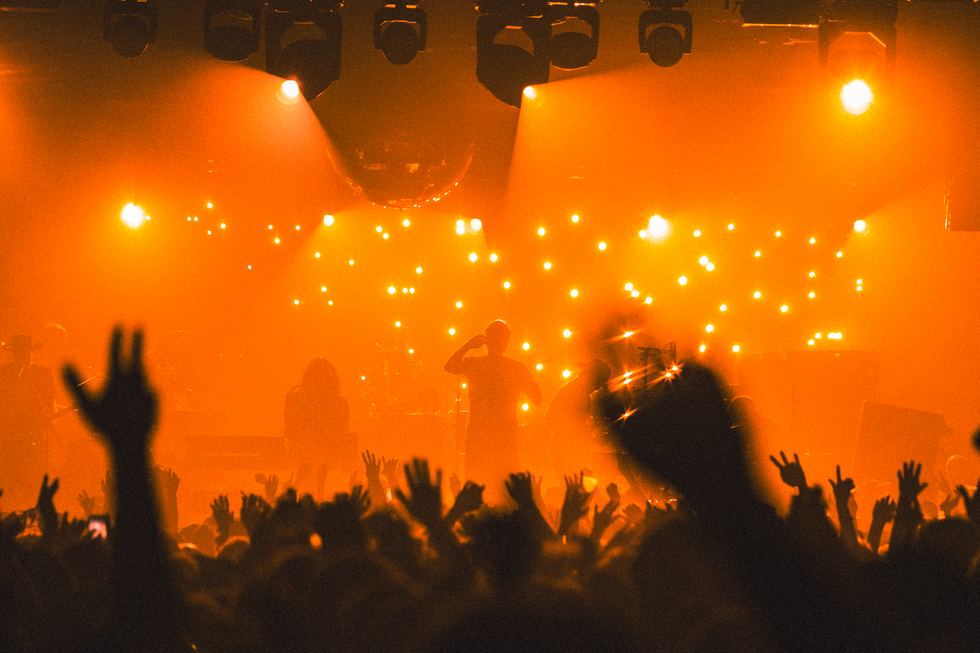
Tyler Myers, Knockdown Center’s managing co-founder and executive director, first found the space that would become the venue when he was working as a project producer for the Frieze Art Fair. He needed a place to paint a tent that was going to be used in an installation by the artist Ula von Brandenburg. “A friend of a friend was like, ‘Oh, I know a guy who has a little janky painting studio set up in this much larger building,’” Myers remembers. After looking at the address — in Maspeth, Queens — he had prepared himself for a winding journey, but found that biking there from Bushwick was a mere eight-minute ride. When he got there, he was stunned to see its gargantuan size, a rarity in New York City.
The structure that is now Knockdown Center has had many lives. The building originally produced bulbs for indoor gas lamps, then glass marbles, before it became the site of Manhattan Door Factory, which invented the knock-down door frame (hence its current title). After Myers initially used the space for Frieze, he rented a studio in the massive structure and got to know its owner, whose father ran the door business that once resided there. The owner had fielded offers from logistics companies to turn it into a warehouse, but he was interested in preserving the building. With Myers' input, it seemed a historically minded music venue was the best option for a reinvention that still preserved its character.
Making that happen was a task Myers was uniquely qualified for. He had previously worked at the House of Blues, helping them find and develop new spaces for venues across multiple cities. With Knockdown Center, though, Myers wasn’t merely renovating a historic property, he was creating a new destination in a zip code few outsiders ventured to. This was before Brooklyn Mirage, Elsewhere or any of the clubs that inhabit Maspeth/Bushwick’s industrial corridor, were in operation in the area.
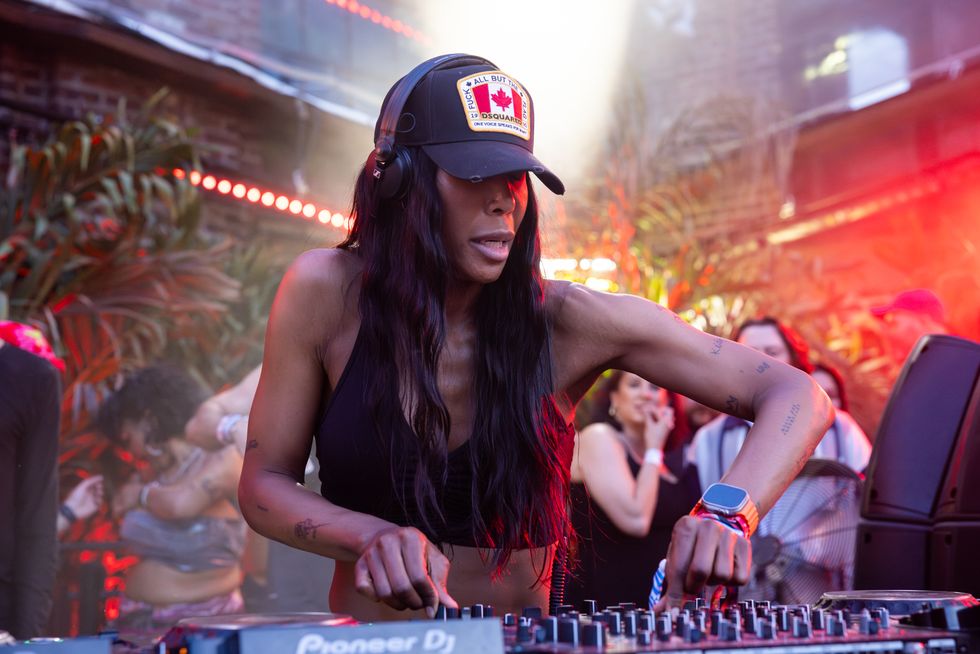
Even after the necessary renovations to the humongous space were done, the new venue’s road to financial sustainability was slow-going. For its first few years, Knockdown Center didn’t even have a liquor license. Its immediate neighbors are warehouses, but a mere block away is the beginning of a small Queens neighborhood with quiet brick homes which sit beside a cemetery. There was strong resistance to the idea of a large venue serving alcohol setting up nearby. “New York City is beautiful, amazing and hard,” Myers shares. “I think of that time as the city showing us how we could be including the neighborhoods, instead of us being like, ‘It's all about our idea.’”
One of the first shows at Knockdown Center was with M.I.A. soon after she flipped off the camera at the Super Bowl, adding to the sense that Knockdown Center spelled mayhem for its neighbors. However, going to community board meetings to earn a liquor license was a chance for the venue to “prove itself” to local stakeholders, Myers shares. “I’m thankful for that process, but I wouldn't choose to do it again,” he remembers, laughing.
That doesn’t mean that those early years without alcohol revenue weren’t almost impossibly hard. “We just hustled,” says Myers. “We did the Red Bull Music Academy and we did as much TV as we could.” Most notably, the space that is now BASEMENT was used in Gotham, Fox’s Batman prequel series, as Catwoman’s dungeon. They used money earned from TV filming to complete necessary renovations, such as adding bathrooms, and slowly began to book out their weekends consistently.
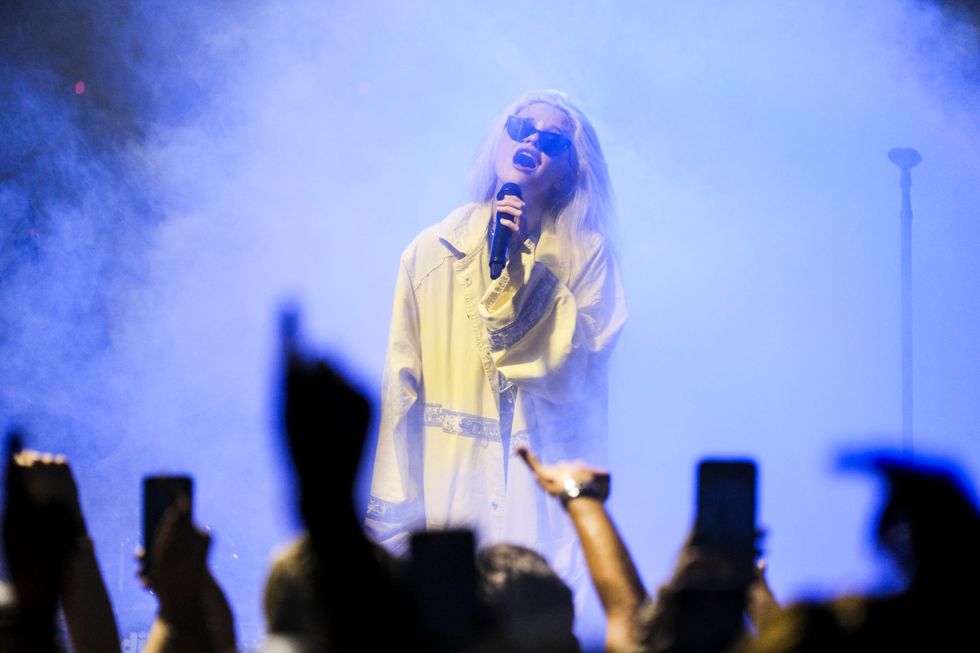
In May of 2019, as Knockdown’s hum began to transform into a buzz, Téa Abashidze and GeGa Japaridze worked with Myers to open BASEMENT in the literal basement beneath Knockdown Center’s main room. They had only recently begun to work for Knockdown Center on its programming side, but quickly became captured by the idea of transforming the venue’s promising, austere downstairs into a proper club. “Knockdown had this really broad program, and we were doing as many different things as we could,” Myers shares. “That allowed us to make downstairs very careful and very specific.”
That specificity is well known to anyone that's entered its dark, musky halls. BASEMENT is often compared to Berlin’s Berghain — a comparison which Abashidze told PAPER is frustrating to hear so often. “There are many clubs that share our vision and music direction, like Berghain,” she says. “People like to compare everything to it because it has a really long-running history, but I think all these clubs are unique in their own ways.” But the clichéd comparison is understandable, since to many Americans BASEMENT is where they've become accustomed to hallmarks of global club culture.
One point of conversation that sucks up a lot of oxygen is their relatively specific door policy; sometimes ticket holders are denied entry if they do not adhere to the night’s dress code, for example. “We chose to have a door policy with the understanding that it was going to be a challenge,” Myers says. “[When we opened] there was a lot of questioning of whether we were making the right decision. We worked really hard at hiring people who understood that the door policy was meant to make a room full of people that were there on purpose. We wanted to focus on dancers and people who needed to be there.”
That said, most don’t take rejection well, and when I show up after my jaunt with LCD Soundsystem, a man is having a full-on spiral at the door, demanding proof of refund for his ticket after being denied entry. The point of the policy was proven, though: no one who yells at a bevy of nightlife professionals in such a manner should be let into a club that serves as a collective catharsis for a community. But still, the business of “curating a crowd” is a fraught, often slippery affair.
All of the discourse is, of course, secondary to the club itself, which is undeniably a central artery of New York City nightlife today. In BASEMENT, there are two rooms, the main room which serves up harder fare, and STUDIO, a smaller dance floor centered around the factory’s original furnace where the music leans towards house. The two rooms feed off each other, creating intimacy within a space that can feel vast and winding.
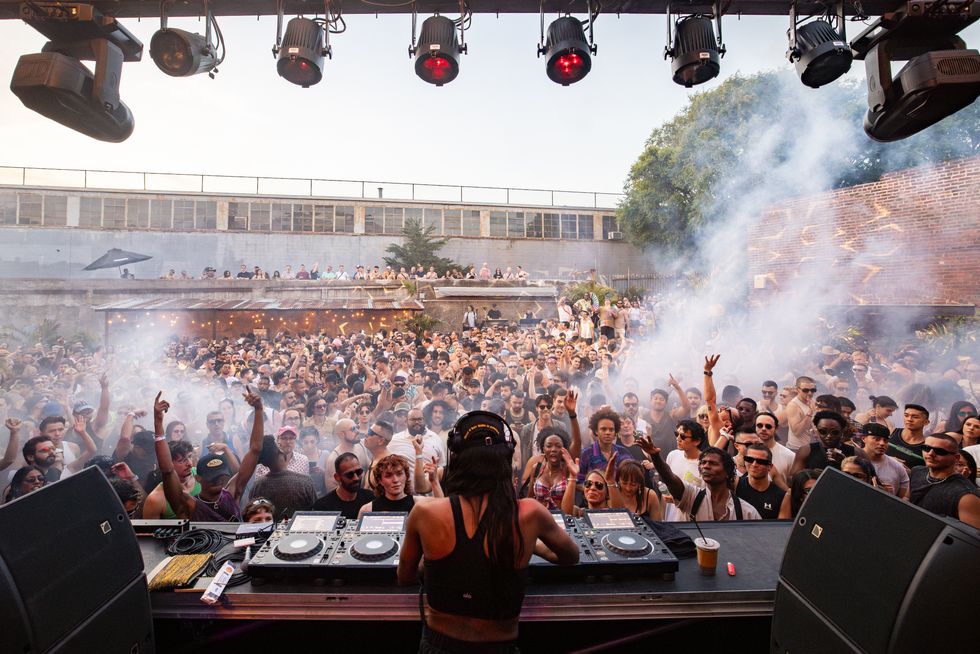
As I head downstairs, BASEMENT resident Lydo is playing a fractalized, architectural mix that sets the foundation for the evening. When STUDIO opens, its warm, reddish light invites us into a purring set by x3butterfly (an alum of PAPER’s mix series, The Tear). Tonight, the music in STUDIO is optimistic, and glimmering with bright chords and pouncing bass. You can sway between that darkness and light for an entire night and walk out into a grey morning. That pendulum swing of energy is addicting, and few places in New York City can offer such a humid fever dream for so long. People get hooked on the space itself. And they get hooked on the sound — which is crunchy, detailed and circles you completely (both rooms use the legendary Funktion-One sound system, the same as at Berghain).
Success has bred confidence for the club's founders. “If your vision comes from your heart and mind, you should trust it,” Japaridze shares over email. “People may challenge you, not because they disagree, but because they understand your vision differently than you do,” he says. “If we had listened to all the people who said a techno club wouldn’t work in New York, BASEMENT wouldn’t be open today. But it is!” Today, numerous internationally recognized parties have chosen to call the club their home base, such as Fist, Wrecked and Herrensauna, a party that originated in Berlin and now has a residency in Maspeth.
As for the connections between BASEMENT and Knockdown Center, according to Abashidze and Japaridze, there are a few. “Many of the artists we first invited to BASEMENT years ago are now playing KDC. We helped them build their presence in the market. They’ve put in the hard work themselves and as a result, we’ve moved them to Knockdown Center [whose main room has a 3,200-person capacity],” they share. The closest connection, though, is WIRE Festival, one of the venue’s annual, marquee events, which “encapsulates a year of BASEMENT’s programming, but on a larger scale, [and is held upstairs].”
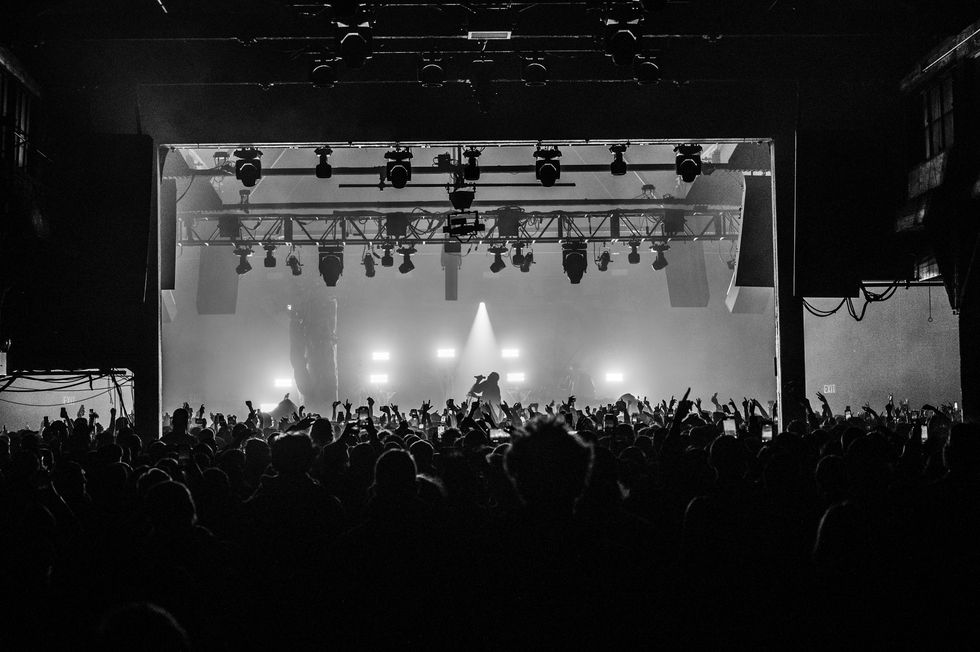
For most, though, upstairs and downstairs are separate universes, separate crowds. And in many ways, that’s by design. But Myers, who has a unique, bird’s-eye view to the entire operation, sees the whole affair (including the outdoor space, the Ruins) as an ecosystem. “Going out and listening to music is all about degrees of excitement: how fun it is to hear the right artist, at the right time, at the right place,” he says. “That could be a Juliana Huxtable set on the main BASEMENT sound system at 5:30 AM or that could be LCD Soundsystem at 10:45 PM upstairs.” Sometimes those degrees are co-current, happening upstairs and downstairs at the same time, but at other times, the mere awareness that all of this has been happening in the same space makes “you feel like you're really at the center of something,” Myers reflects.
Am I in the center of something? All I know is I’m delirious as my night ends in a pedal-to-the-metal spiral from the spanish-born DJ JASSS. The whiplash of starting with LCD Soundsystem and ending in a delicious main room moment provokes my tired, roving mind and I start thinking: First, about the relationship between architecture, sound and subculture. Then about rent, and bank loans and the money required to turn a door factory into a club. But the exit to BASEMENT isn’t a door; it’s heavy plastic streamers you have to fight through. The parking lot outside is dead silent and so many of my thoughts, my whole night really, just evaporate. I look towards Knockdown Center, which is closed and quiet. From here, you’d think the party was over.
Photography: Kevin Condon, Chris Lavado, Knockdown Center
MORE ON PAPER
Entertainment
Rami Malek Is Certifiably Unserious
Story by Joan Summers / Photography by Adam Powell
Story by Joan Summers / Photography by Adam Powell
14 November
Music
Janelle Monáe, HalloQueen
Story by Ivan Guzman / Photography by Pol Kurucz/ Styling by Alexandra Mandelkorn/ Hair by Nikki Nelms/ Makeup by Sasha Glasser/ Nails by Juan Alvear/ Set design by Krystall Schott
Story by Ivan Guzman / Photography by Pol Kurucz/ Styling by Alexandra Mandelkorn/ Hair by Nikki Nelms/ Makeup by Sasha Glasser/ Nails by Juan Alvear/ Set design by Krystall Schott
27 October
Music
You Don’t Move Cardi B
Story by Erica Campbell / Photography by Jora Frantzis / Styling by Kollin Carter/ Hair by Tokyo Stylez/ Makeup by Erika LaPearl/ Nails by Coca Nguyen/ Set design by Allegra Peyton
Story by Erica Campbell / Photography by Jora Frantzis / Styling by Kollin Carter/ Hair by Tokyo Stylez/ Makeup by Erika LaPearl/ Nails by Coca Nguyen/ Set design by Allegra Peyton
14 October
Entertainment
Matthew McConaughey Found His Rhythm
Story by Joan Summers / Photography by Greg Swales / Styling by Angelina Cantu / Grooming by Kara Yoshimoto Bua
Story by Joan Summers / Photography by Greg Swales / Styling by Angelina Cantu / Grooming by Kara Yoshimoto Bua
30 September
Music
Demi Lovato Is No Joke
Story by Ivan Guzman / Photography by Jason Renaud / Styling by Chris Horan/ Makeup by Loftjet / Set design by Allegra Peyton
Story by Ivan Guzman / Photography by Jason Renaud / Styling by Chris Horan/ Makeup by Loftjet / Set design by Allegra Peyton
15 September


